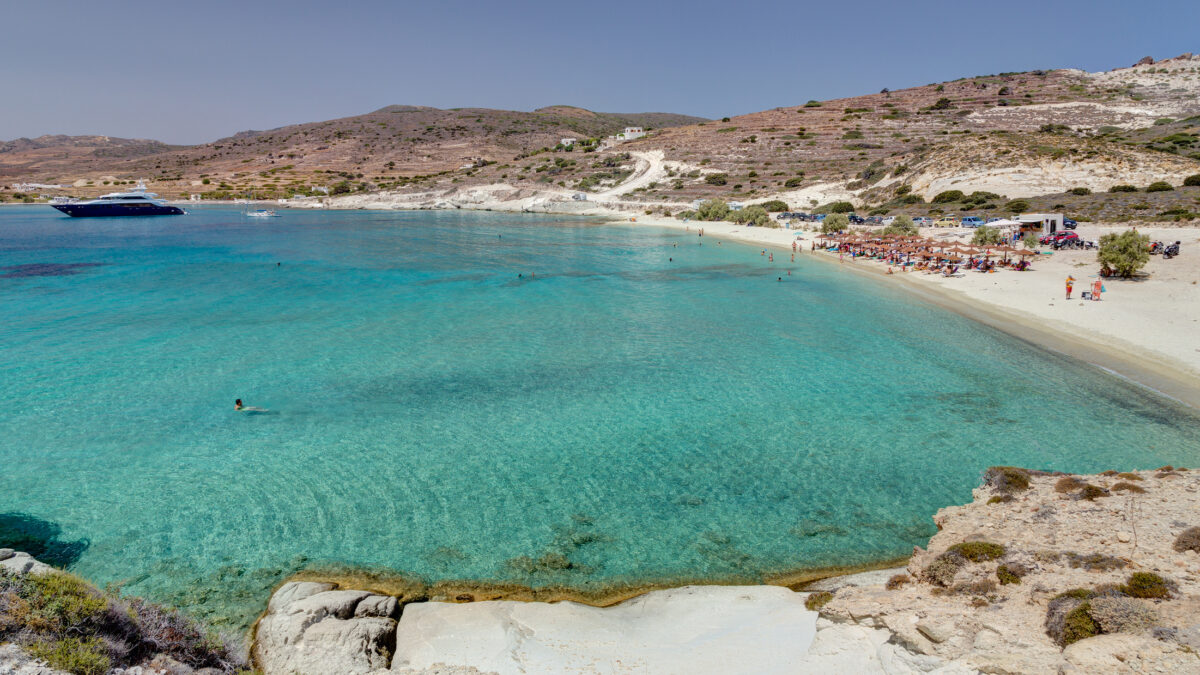Kimolos, according to tradition, took the name of its mythical first resident. Nevertheless, the island stands out for its volcanic soil, and particularly for the distinctive white rock called kimolia—which, despite sharing the same name, is not related to the chalk used on blackboards—thus giving rise to the term ‘Kimolian earth’.
The first thing visitors see upon arrival is the port of Psathi. Clear blue waters and green tamarisks are joined by the endless song of the cicadas, the very definition of the good life. The village of Chorio is located about a kilometre from Psathi. Kimolos does not have a Chora (main town) but rather a Chorio (village), built around the island’s medieval castle. Its two neighbourhoods are Mesa Kastro and Ekso Kastro. The closer you get to the castle, the older the houses, a testament to this small island’s rich history, which is also on full display at the local Archaeological Museum. Visitors can cap off their day with a visit to the Agora, the central marketplace.
Beyond its history, the island also boasts a wealth of culture. A small group of locals, the ‘Kimolistas’, have established small lending libraries scattered throughout the island’s alleyways, while the Kalisperitis open-air cinema offers the opportunity to enjoy films in a fairy tale-like environment.
Kimolos offers spectacular beaches. Turquoise waters that almost defy the imagination, white sands, rocky surfaces and tamarisks form a truly idyllic landscape. Most famous among the island’s beaches is Prassa, with its white rock formations, sand, and crystal-blue waters. However, that doesn’t detract from the beauty of the island’s other beaches, such as Kalamitsi, Alyki, Bonatsa, Psathi, Monastiria and Mavrospilia. Polyaigos beach is accessible only by boat but is definitely worth a visit.
Gastronomy
On Kimolos, the cuisine is frugal but ornate (the local wedding biscuits, for example, look like miniature works of art), uses simple ingredients and recipes, and has a talent for dough. One of the island’s specialities is ladenia, an enduringly popular flatbread topped with fresh tomato, onion and olive oil. But visitors should not miss the opportunity to taste the other varieties of this dish, such as elenia, amarathenia, kolokythenia and Kimolos’ most famous confection, honey pie with myzithra.
Thanks to its volcanic soil, Kimolos produces exceptionally flavourful local goods. The island’s many flocks of sheep and goats provide the milk used in the production of the local xino, myzithra and manoura cheeses. Kimolos also produces dark tomatoes and pomodori (cherry tomatoes), antzouria or xylaggoura (a unique variety of round cucumber grown locally and made into spoon sweets), fennel and beans.
How to get there
Kimolos is located in the Western Cyclades, neighbouring Milos. It is easy to get to by ferry from the ports of Piraeus and Lavrio. Alternatively, you can catch a flight to Milos and take a ferry to Kimolos from there.










